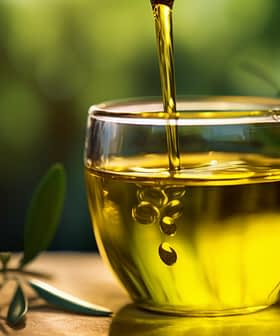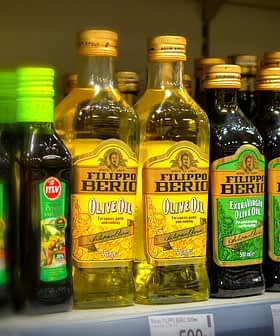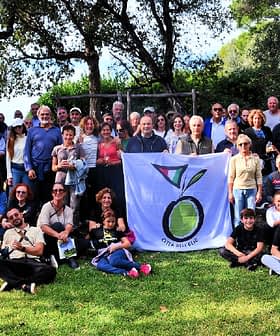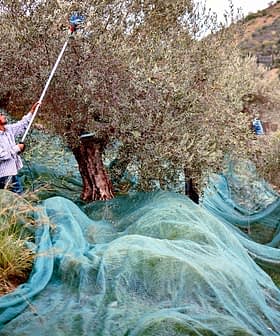Extra Virgin Olive Oil Is the Soul of These Classic Italian Winter Dishes
A famous Apulian chef shares how to make the best use of fresh extra virgin olive oil in sweet and savory dishes.
Italians are transitioning to a more wintery diet with the arrival of new extra virgin olive oil, which is traditionally harvested in October and November. The fresh olive oil pairs well with seasonal ingredients like pumpkins, chestnuts, and mushrooms, and can be used in various dishes to enhance flavors and promote health benefits.
Despite temperatures exceeding seasonal averages, Italians are already turning toward a more wintery diet as newly-pressed extra virgin olive oil reaches restaurants and kitchens.
October and November are traditionally when most Italian olives are harvested and transformed into olive oil.
“One of the most interesting effects of the arrival of new extra virgin olive oils is the enthusiasm it sparks among quality producers and consumers alike,” Emanuele Natalizio, founder of the Olive Oil Gala in Puglia and chef at the historic restaurant Il Patriarca in Bitonto, told Olive Oil Times.
See Also:Use Olive Oil in Soups and Stews“Most newly early-harvested olive oils have specific characteristics,” he explained. “They don’t offer a broad range of pairings because the first olive harvested in the region is typically very delicate, with bitterness, spiciness and a balanced yet moderate polyphenolic profile.”
“The unique aspect of the new oil, being a fresh and early pressing, is always a distinct presence of chlorophyll,” he added. “When you look at this olive oil, its emerald green color stands out, and you can sense all its flavors, like the almond scent characteristic of Bitonto’s olive oils.”
The new season brings fresh extra virgin olive oil pairing possibilities
Considering the changing season and its bounty, Natalizio shared some tips for showcasing extra virgin olive oils at their best.
“A good combination for this time of year, when they’re at their peak, is with pumpkins,” he said. “You can go for a pumpkin risotto or pair it with chestnuts, which are also in season.”

Olive Oil Gala founder Emanuele Natalizio
“Or you could try pappardelle pasta with pumpkin and a sprinkle of salted chestnut on top,” Natalizio added. “But they also work in desserts. The same dessert could be made with pumpkin flour, caramelized chestnuts, and, of course, olive oil. Or you could pair olive oil with a chestnut cream.”
Olive oil pairs perfectly with mushrooms as autumn becomes winter
“The typical Apulian cardoncello mushroom works well in a meat dish, like lamb ribs,” Natalizio said. “Baked with cardoncello, a simple seasoning of garlic, parsley and basil creates a light marinade, highlighting the mushroom’s sweet and slightly bitter flavor, which has a nice texture.”
The extra virgin olive oil it is paired with enhances the mushroom’s qualities. “When served warm, the olive oil acts as an aroma enhancer,” Natalizio said.
Time to use extra virgin olive oil for cooking
“As the new season kicks in, my patients increasingly ask me for recipes that use extra virgin olive oil for cooking, to favor the consumption of warm foods,” said Monica Binello, a biologist specialized in therapeutic nutrition in the northwestern city of Turin.
“Look at very important molecules, such as lycopene, a molecule found in tomatoes believed to have anti-tumor properties,” Binello noted. “In that case, the combination of high temperatures and extra virgin olive oils impacts the molecule and makes it significantly more bio-available.”
Along with lycopene, she added that other molecules exhibit similar behaviors when combined with extra virgin olive oil.
“Beyond such benefits, using extra virgin olive oil in cooking seasonal food such as chicory, broccoli, cauliflower or even artichokes might also stimulate digestion,” she said.
“That happens because when cooking vegetables in a pan with extra virgin olive oil, a lipid layer is formed and it stimulates the production of gastric juices,” Binello added.
She suggests that people with digestive difficulties boil raw vegetables in a pan before cooking them with olive oil.
“This way, they dry up a bit and become more digestible thanks to this lipid layer,” she said.
Binello recommended extra virgin olive oil in pinzimonio, a traditional dressing based on olive oil, salt, pepper and sometimes vinegar, as a classic winter dish.
“When we talk about winter food, extra virgin olive oil might be proposed raw with seasonal vegetables in pinzimonio, such as celery, carrot and fennel, where the extra virgin olive oil used raw enhances all its properties as well as those of the raw food, such as vitamins A and E, and phenols,” Binello explained.
Pumpkin Vellutata soup
Vellutata is an Italian velvety cream that is usually made by blending vegetables. The name comes from velluto, the Italian word for “velvet,” a direct hint to the smooth texture of the serving.
While other cooking fats are occasionally used, extra virgin olive oil is considered the best fat for such a dish.
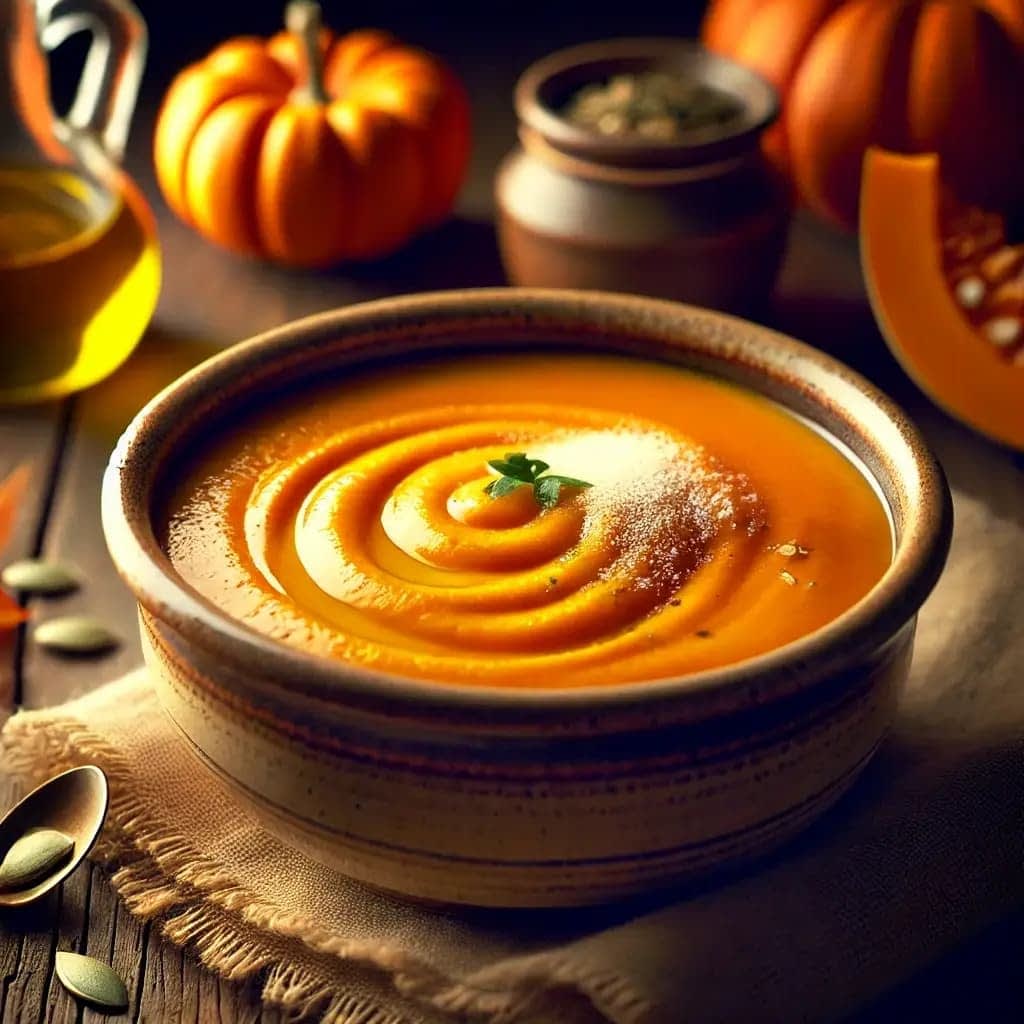
AI-generated image of pumpkin Vellutata
“In Pumpkin Vellutata, the garlic is sautéed in extra virgin oil, then the pumpkin is added, cooked, passed through a food processor and is eventually adjusted with cornstarch to get the creaminess you want,” Binello said.
“Once you are there, you can still add some ricotta or Parmigiano cheese and then a drizzle of raw extra virgin olive oil,” she added.
Such a choice of ingredients in combination with extra virgin olive oil is not only a matter of taste.
“I recommend it because, for example, with ricotta and Parmigiano, it gets enriched in calcium,” Binello said. “Olive oil by itself also favors the bio-availability of calcium and the bone remineralization process.”
“That is why I suggest this serving during menopause, for example, or in cases of osteopenia, pregnancy, during childhood and more,” she added.
The vegetable classic: Trifolato Artichoke
The crisp autumn air and the onset of winter often stimulate the appetite of many Italians.
“I always say to my patients that we need to privilege quality over quantity, as lots of healthy servings can satisfy the palate without leaving the perimeters of the Mediterranean diet,” Binello said.
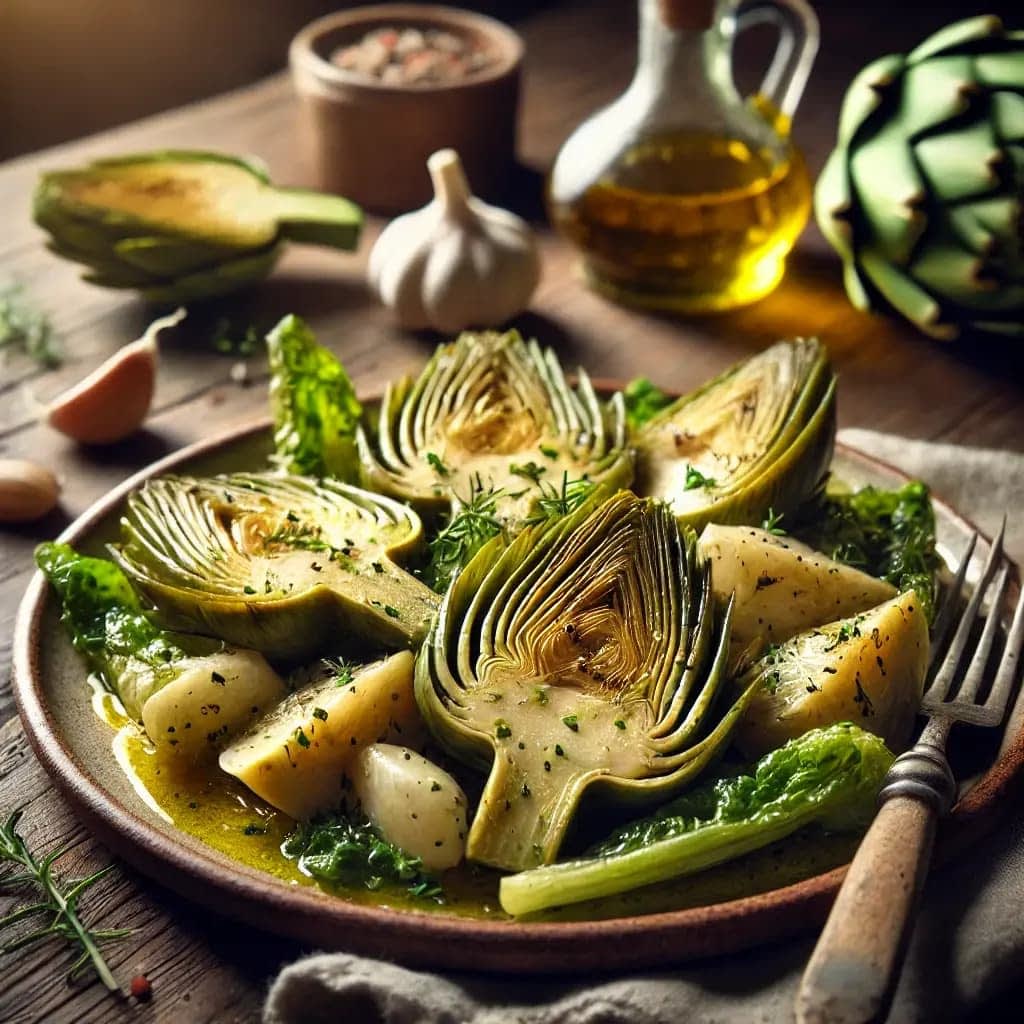
Artichoke and chicory dish (AI-generated image)
Such is when sautéing seasonal vegetables with high-quality extra virgin olive oil.
“Looking at someone in good health and with no specific illnesses, I would propose seasonal vegetables such as trifolato artichoke,” Binello said.
Trifolato is a cooking method that adds garlic and parsley to the sauté pan as ideal companions for the main vegetables. This technique is widely used in Italy for preparing various dishes, with mushrooms being the most popular choice.
“Artichokes are not only tasty but also good for those who need liver stimulation. Of course, they are not a choice for those who suffer from hepatopathies or intestinal inflammation,” Binello explained, stressing how seasonal food choices must be tailored to personal taste and health conditions.
Similar considerations apply to other popular vegetables in Italy, such as chicory, traditionally sautéed in olive oil, with or without garlic, often accompanied by artichokes and sometimes other vegetables like potatoes.
The perfect wintery salad: Orange Fennel
A classic in Italian culinary tradition, orange and fennel salad showcases the natural pairing of seasonal ingredients, especially when enjoying raw foods seasoned with extra virgin olive oil.
“The orange and fennel salad is a perfect serving in the season,” Binello said. “Of course, it would not be a good choice for those who have diabetes or gastric conditions.”
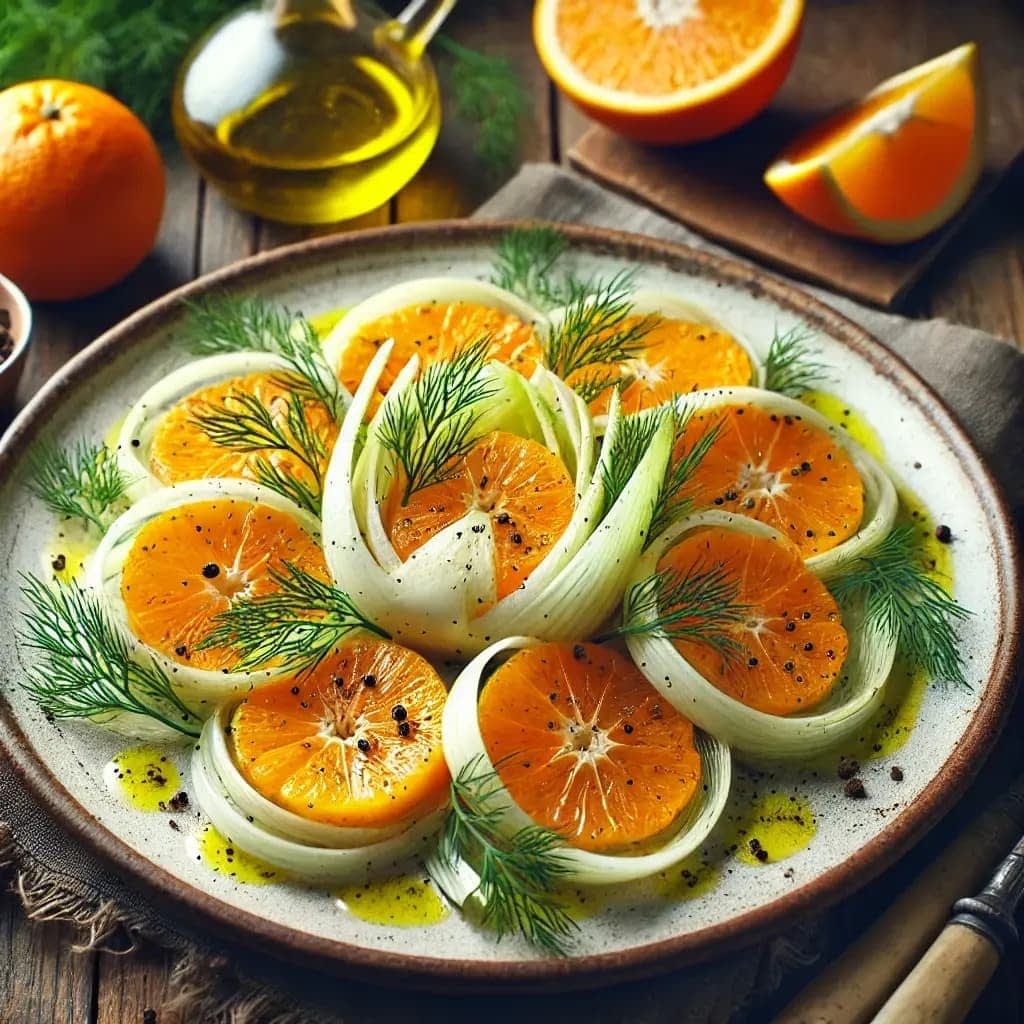
AI-generated image of orange fennel salad
She added that she often includes olives in the salad along with the extra virgin olive oil for the flavor and as another source of vitamin E.
“With the vitamin C coming from the oranges and the diuretic and anti-meteoric effect of fennel, it comes perfect for the season,” Binello said.
“And then, for a perfect mid-morning or mid-afternoon snack, why choose anything different from some grilled bread with extra virgin olive oil on top,” she added.
Natalizio is on the same wavelength. “One of the best things you can do with freshly pressed extra virgin olive oils is to savor their exquisite taste and uniqueness with the king of all dishes: olive oil on bread,” he concluded.
Share this article



